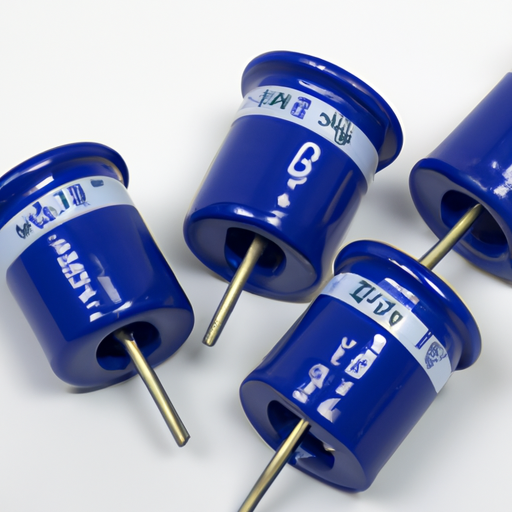Polymer capacitors are a type of capacitor that uses conductive polymer as the electrolyte instead of liquid or solid electrolytes. They are known for their high capacitance values, low equivalent series resistance (ESR), and low equivalent series inductance (ESL). Polymer capacitors are widely used in various electronic devices such as smartphones, laptops, and power supplies due to their reliability and performance.
The latest specification of polymer capacitors includes various parameters such as capacitance, voltage rating, temperature range, and size. These specifications are crucial in determining the suitability of a polymer capacitor for a particular application. Let's delve into each of these specifications in detail.
Capacitance:
The capacitance of a polymer capacitor is a measure of its ability to store charge. It is typically measured in farads (F) or microfarads (μF). Polymer capacitors are available in a wide range of capacitance values, ranging from a few microfarads to several hundred microfarads. The capacitance value required for a specific application depends on the power requirements and voltage levels of the circuit.
Voltage Rating:
The voltage rating of a polymer capacitor indicates the maximum voltage that the capacitor can withstand without breaking down. It is crucial to select a polymer capacitor with a voltage rating higher than the operating voltage of the circuit to prevent damage. Polymer capacitors are available in various voltage ratings, ranging from a few volts to several hundred volts.
Temperature Range:
The temperature range of a polymer capacitor specifies the range of temperatures at which the capacitor can operate reliably. Polymer capacitors are designed to operate within a specific temperature range, typically from -55°C to 125°C. It is essential to consider the temperature range of the application environment when selecting a polymer capacitor to ensure optimal performance and longevity.
Size:
The size of a polymer capacitor is another critical specification to consider when designing electronic circuits. Polymer capacitors are available in various sizes, ranging from small surface-mount devices to larger through-hole components. The size of the capacitor is determined by its capacitance value, voltage rating, and temperature range. It is essential to select a polymer capacitor that fits within the available space in the circuit while meeting the required specifications.
In addition to these basic specifications, polymer capacitors may also have additional features such as low ESR, low ESL, high ripple current handling capability, and long operational life. These features enhance the performance and reliability of polymer capacitors in demanding applications.
Polymer capacitors are commonly used in power supplies, voltage regulators, DC-DC converters, and other electronic devices that require high capacitance values and low ESR. They offer several advantages over traditional electrolytic capacitors, including higher capacitance density, lower ESR, and longer operational life.
In conclusion, the latest specification of polymer capacitors includes parameters such as capacitance, voltage rating, temperature range, and size. These specifications are crucial in determining the suitability of a polymer capacitor for a specific application. Polymer capacitors offer high performance, reliability, and longevity, making them an ideal choice for a wide range of electronic devices.
Polymer capacitors are a type of capacitor that uses conductive polymer as the electrolyte instead of liquid or solid electrolytes. They are known for their high capacitance values, low equivalent series resistance (ESR), and low equivalent series inductance (ESL). Polymer capacitors are widely used in various electronic devices such as smartphones, laptops, and power supplies due to their reliability and performance.
The latest specification of polymer capacitors includes various parameters such as capacitance, voltage rating, temperature range, and size. These specifications are crucial in determining the suitability of a polymer capacitor for a particular application. Let's delve into each of these specifications in detail.
Capacitance:
The capacitance of a polymer capacitor is a measure of its ability to store charge. It is typically measured in farads (F) or microfarads (μF). Polymer capacitors are available in a wide range of capacitance values, ranging from a few microfarads to several hundred microfarads. The capacitance value required for a specific application depends on the power requirements and voltage levels of the circuit.
Voltage Rating:
The voltage rating of a polymer capacitor indicates the maximum voltage that the capacitor can withstand without breaking down. It is crucial to select a polymer capacitor with a voltage rating higher than the operating voltage of the circuit to prevent damage. Polymer capacitors are available in various voltage ratings, ranging from a few volts to several hundred volts.
Temperature Range:
The temperature range of a polymer capacitor specifies the range of temperatures at which the capacitor can operate reliably. Polymer capacitors are designed to operate within a specific temperature range, typically from -55°C to 125°C. It is essential to consider the temperature range of the application environment when selecting a polymer capacitor to ensure optimal performance and longevity.
Size:
The size of a polymer capacitor is another critical specification to consider when designing electronic circuits. Polymer capacitors are available in various sizes, ranging from small surface-mount devices to larger through-hole components. The size of the capacitor is determined by its capacitance value, voltage rating, and temperature range. It is essential to select a polymer capacitor that fits within the available space in the circuit while meeting the required specifications.
In addition to these basic specifications, polymer capacitors may also have additional features such as low ESR, low ESL, high ripple current handling capability, and long operational life. These features enhance the performance and reliability of polymer capacitors in demanding applications.
Polymer capacitors are commonly used in power supplies, voltage regulators, DC-DC converters, and other electronic devices that require high capacitance values and low ESR. They offer several advantages over traditional electrolytic capacitors, including higher capacitance density, lower ESR, and longer operational life.
In conclusion, the latest specification of polymer capacitors includes parameters such as capacitance, voltage rating, temperature range, and size. These specifications are crucial in determining the suitability of a polymer capacitor for a specific application. Polymer capacitors offer high performance, reliability, and longevity, making them an ideal choice for a wide range of electronic devices.
